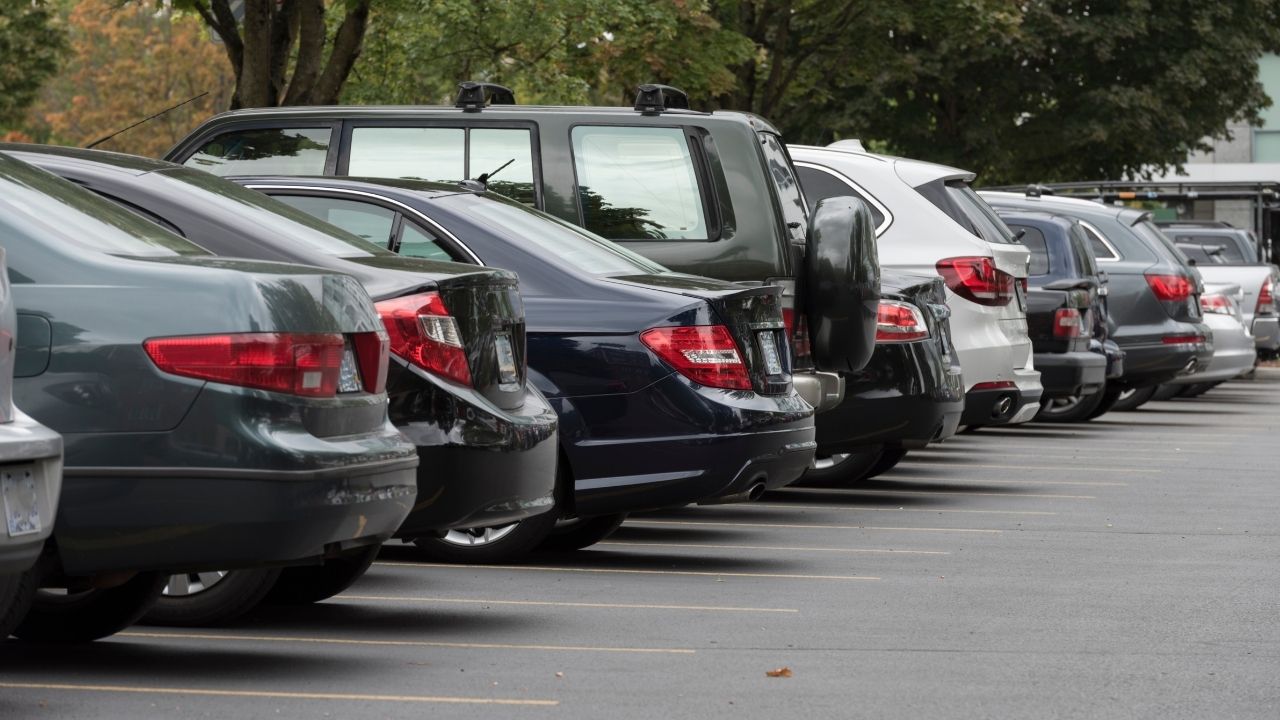Lifestyle
The Best Practices for Maintaining Your Car’s Value

Second-hand car sales are booming right now, and at the best possible time – with new car availability dwindling, the value of second-hand vehicles is on the rise. The market shows no signs of slowing, making the future very bright for used car sales. But you can’t rely on the market alone to sell your car. If it isn’t in the best possible condition, it will still depreciate a significant portion of its initial value. But with these simple steps, you can maintain your car and its value at the same time – ensuring your car sells for the highest possible price.
Keep It Clean
Hoovering your car might not sound like a sure-fire way to keep it from losing value over time, but failure to keep up with simple cleaning tasks can quicken the wear of certain materials. For example: if dirt remains baked into your foot-well carpets, the fibres in your carpet will suffer over time, especially if they receive continual use. Worn interiors cut into your car’s value, and re-upholstery can be expensive. So be sure to keep up with regular car cleans, interior and exterior.
Grime left unchecked on your exterior windows can become a problem if hardened – an action as simple as switching on your windscreen wipers could result in a scratched windscreen. Something as simple as keeping your car in the shade can prevent the paintwork from fading, keeping your car looking new as possible prior to re-sale.
Keep It Serviced
Whether or not you’re selling your car, it is crucial that you send it in for regular servicing. This way, you are more likely to discover any potential issues with your car before they present themselves – usually as a nasty noise or smell, meaning they’ve caused further damage in the process. For example, timing belts or cam belts are very important for regulating the mechanical elements of your engine, and are recommended to be replaced every 4 years or 40,000 miles. Cam belt failure can cause serious problems with your pistons, and a service would be sure not to miss a cam belt due for replacement.
By that same token, booking your car MOT before sale can be beneficial to the sale. While it may seem counter-intuitive to spend money on your car before selling it, being able to advertise the car as having passed a recent MOT is a big bonus to buyers – not only indicating that it runs fine, but also that they don’t have to book their own for a while.
Keep It Stock
An easy way to accidentally throw money away in a used car sale is to keep your car modified. Used car buyers are usually looking for a car in pristine original condition, and extras such as a new stereo system or modified bodywork like spoilers and flared arches – while themselves expensive – are more likely to turn buyers off, and force you to lower your price in the process.
Keep Your Fluids Topped Up
Last but certainly not least, be sure to check your fluids regularly. Oil is especially important for your engine, and regular top-ups and oil replacements can keep it ticking over like new for some time. Brake fluid is also important to monitor, and even your coolant fluids can have a marked effect on your engine’s performance.
Lifestyle
How Magic Moment Resort Became the Pioneer of a New Era: The First-Ever Dazzler Select by Wyndham

In Central Florida’s packed landscape of family hotels and theme park lodgings, a unique kind of property has emerged. Magic Moment Resort & Kids Club in Orlando is earning attention from traveling families for a simple reason. It delivers joy, warmth, and convenience at a smart value that keeps Disney dreams accessible rather than overwhelming.
By joining Wyndham, Magic Moment Resort unlocks the strength of a global powerhouse, gaining worldwide visibility, advanced technology, and access to Wyndham Rewards, the largest hotel loyalty program on the planet. This strategic move expands its reach, builds guest trust, and amplifies its impact, all while preserving the unique identity that sets it apart.
Just a short drive from the gates of Walt Disney World, the resort sits along the palm-framed stretch of West Irlo Bronson Memorial Highway. The location has long been known for its tourism bustle, yet Magic Moment has carved out a softer identity. It feels playful and colorful, but also intentional. It is designed by a family for other families, and that perspective shapes every experience on the property.
A Philosophy Rooted in Family Connection
Magic Moment Resort was built with a belief often forgotten in today’s tourism industry. Family vacations should feel uplifting instead of stressful, and affordability should not come at the expense of comfort or creativity.
Check-in feels more personal than transactional. Parents arrive with strollers, snacks, and tired children. The staff seems to understand this rhythm instinctively. The energy is warm, the pace is easy, and the tone is set long before anyone even enters the room.
Unlike competing hotels that charge a steep premium for proximity to the parks, Magic Moment focuses on smart value without compromise. Its pricing strategy is refreshingly straightforward. Families can stay five minutes from Disney without draining their travel budgets. For many guests, that difference helps shift resources from hotel costs to experiences. It means more character breakfasts, more souvenirs, and more freedom to enjoy the parks without financial tension following every decision.
Spaces Designed for Children and Considerate of Parents
Magic Moment is filled with color, but nothing feels overstimulating. Instead, the resort offers a sense of wonder scaled to a child’s imagination.
The themed family rooms are a highlight. Children step into rooms that feel lighthearted and whimsical, yet parents appreciate that they are also functional and comfortable. It is the atmosphere of a themed suite without the theme park price.
Its Kids Club and Teens Club reflect that same thoughtful balance. These spaces invite exploration and creativity for children and provide a nurturing level of supervision. Parents can enjoy an hour by the heated pool, relax in a shaded cabana, or simply take a quiet moment while knowing their children are safe and engaged.
The resort’s grounds encourage slow mornings and gentle afternoons.There’s a 30,000 sqf outdoor playground as well as peaceful corners for parents. Importantly, families are not asked to pay additional fees to enjoy them. Magic Moment’s amenities feel generous rather than transactional.
Unforgettable Days at the Parks
For families navigating a Disney vacation, convenience is often the true luxury. Magic Moment delivers this with a complimentary delicious hot breakfast that encourages everyone to sit and enjoy the start of the day rather than rush through it.
Transportation to the parks is included, which removes one of the most common stress points for visiting families. There is no parking lot maze and no long lines at the toll booths. Guests simply board the shuttle and begin their day with ease.
When the sun sets and everyone returns from a day of rides and parades, the resort becomes a place to unwind. Children head straight for the pool. Parents sip Starbucks coffee. The atmosphere is relaxed and bright, and the resort feels like an extension of the Disney experience rather than a pause from it.
A Value That Resonates with Families
What truly elevates Magic Moment is the balance it achieves between smart value and experience. The resort has cultivated a loyal following because guests feel they receive more than they pay for. More thoughtful design. More space for connection. More comfort without excess.
Affordability here does not signal minimalism. Instead, it allows families to breathe. It creates space for shared moments that are often overlooked in the rush of theme-park vacations. Children play freely. Parents unwind without guilt. Families spend more time together and less time navigating logistics.
A Resort Built with Heart
Magic Moment Resort & Kids Club stands out in a region overflowing with hospitality options. Its charm is not rooted in extravagance. It is grounded in sincerity. It reflects the belief that family travel should feel joyful, accessible, and full of color.
For families planning a Disney visit, it represents more than a place to sleep. It is a retreat where memories can form in the quiet moments as much as in the thrilling ones.
At Magic Moment, the greatest luxury is not an amenity. It is the feeling of being exactly where you are meant to be, together.
-

 Tech5 years ago
Tech5 years agoEffuel Reviews (2021) – Effuel ECO OBD2 Saves Fuel, and Reduce Gas Cost? Effuel Customer Reviews
-

 Tech6 years ago
Tech6 years agoBosch Power Tools India Launches ‘Cordless Matlab Bosch’ Campaign to Demonstrate the Power of Cordless
-

 Lifestyle6 years ago
Lifestyle6 years agoCatholic Cases App brings Church’s Moral Teachings to Androids and iPhones
-

 Lifestyle5 years ago
Lifestyle5 years agoEast Side Hype x Billionaire Boys Club. Hottest New Streetwear Releases in Utah.
-

 Tech7 years ago
Tech7 years agoCloud Buyers & Investors to Profit in the Future
-

 Lifestyle5 years ago
Lifestyle5 years agoThe Midas of Cosmetic Dermatology: Dr. Simon Ourian
-

 Health7 years ago
Health7 years agoCBDistillery Review: Is it a scam?
-

 Entertainment6 years ago
Entertainment6 years agoAvengers Endgame now Available on 123Movies for Download & Streaming for Free
